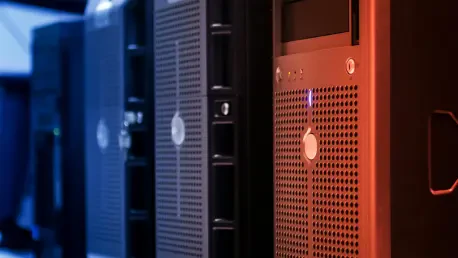Microsoft SharePoint Servers have been a crucial component in business operations by enabling collaborative functionalities essential for team productivity and communication. However, these systems are currently facing new cybersecurity threats that exploit vulnerabilities, specifically through remote code execution (RCE). The emergence of vulnerabilities identified as CVE-2025-53770 and CVE-2025-53771 has alarmed IT professionals worldwide, impacting the security protocols of these significant enterprise platforms. Originating from previously addressed flaws in SharePoint Servers, these vulnerabilities have evolved to allow attackers to execute unauthorized operations, highlighting an urgent need for improved security measures in server management. Recent exploit attempts demonstrate the effectiveness of these vulnerabilities in penetrating defenses, with sectors ranging from finance to healthcare being targeted, showcasing the expansive scope and repercussions of these cybersecurity weaknesses. Addressing these weaknesses is paramount for organizations to safeguard their sensitive data and ensure uncompromised operational continuity.
1. Exploits & Vulnerabilities
The vulnerabilities labeled CVE-2025-53770 and CVE-2025-53771 have exposed critical weaknesses in on-premise Microsoft SharePoint Servers, permitting unauthorized remote code execution. These vulnerabilities stand as sophisticated evolutions of previously patched security flaws (CVE-2025-49704 and CVE-2025-49706), both initially discovered in a related security event and supposedly addressed in past security patching cycles. Despite initial efforts to fortify server defenses, attackers have identified and exploited incomplete security provisions through advanced techniques including deserialization and ViewState exploitation. The vulnerabilities enable attackers to bypass authentication protocols to upload malicious files and extract sensitive cryptographic information from the server’s machine configuration. Insights from cybersecurity observations indicate a wide range of industrial targets, signifying the pervasive exploitation in diverse organizational sectors like education and energy domains. Developed strategies include enhancing security updates and employing better predispositions to defend against advancements in attack methodologies aiming at SharePoint servers.
While Microsoft has released necessary security updates for certain SharePoint editions like Subscription and Server 2019, a comprehensive patch for SharePoint Server 2016 remains pending, indicating the ongoing challenge in addressing technological vulnerabilities. Proactive defense systems, including those from cybersecurity firms like Trend Micro, have attempted to mitigate these threats with enhanced security protocols since earlier in the current year. These efforts underscore the importance of aligning and updating defense strategies with technological evolutions to protect enterprise information systems from potential breaches. The presence and active exploitation of these vulnerabilities showcase the critical need for organizations to remain vigilant and incorporate multifaceted protection approaches to safeguard against emerging threats to their digital infrastructures.
2. Overview of Vulnerabilities
The vulnerabilities identified as CVE-2025-53770 and CVE-2025-53771 in Microsoft SharePoint Servers have emerged as formidable threats, capable of severely compromising on-premise server ecosystems. Initial reports from cybersecurity entities have confirmed the active exploitation of these vulnerabilities, propelling their prominence in cybersecurity discussions. These vulnerabilities derive from earlier flaws, specifically CVE-2025-49706 and CVE-2025-49704, initially disclosed in significant cybersecurity events and subsequently patched in previous cycles. Despite the mitigation efforts, further scrutiny revealed inadequacies in initial patches, necessitating enhanced security measures. Microsoft has responded with security bulletins and updated patches for SharePoint Subscription Edition and 2019, with a forthcoming patch for the 2016 version.
Trend Micro’s cybersecurity research played a pivotal role in identifying and mitigating risks associated with these vulnerabilities, providing customers with proactive protection against related threats. These vulnerabilities emphasize the need for organizations to continuously evaluate their cybersecurity policies and integrate comprehensive safeguards to counter multi-layered threats that exploit server vulnerabilities for unauthorized actions. With exploit attempts manifesting across various regions, including Asia and North America, industries such as finance and healthcare have become prime targets, accentuating the widespread implications of these security threats. Organizations must remain diligent, employing stringent security measures and updating their defenses regularly to prevent exploitation through unauthorized remote code execution across vulnerable systems.
3. Technical Description of Exploitation
The exploitation of vulnerabilities CVE-2025-53770 and CVE-2025-53771 within Microsoft SharePoint Servers unfolds through precise, orchestrated methodologies by attackers seeking to breach server security. The strategic attack involves targeting the server’s endpoints via specially crafted HTTP requests with unique headers designed to bypass authentication mechanisms. This breach enables attackers to upload a malignant file, named spinstall0.aspx, to extract cryptographic secrets crucial for generating unauthorized payloads, facilitating remote execution attacks. Through the exploitation process, attackers leverage advanced serialization skills and bypass security defenses with tools designed to infiltrate the server’s configuration setup.
The upload and subsequent manipulation of the spinstall0.aspx file pose significant risks to server cryptographic security, exposing essential keys and authentication settings. By extracting the MachineKey configurations from SharePoint servers, threat actors can deploy tools like ysoserial to create serialized ViewState objects that enable remote code execution. These objects can activate system operations unauthorizedly, potentially intensifying data corruption and unauthorized access risks within the server environment. Understanding the complexities and procedures of these exploitation methodologies aids businesses in fortifying their security postures, preventing inadvertent exposure to sophisticated attacks targeting on-premise systems.
4. Security Strategies and Recommendations
Organizations encountering potential compromise through CVE-2025-53770 and CVE-2025-53771 vulnerabilities in SharePoint must engage proactive security strategies to mitigate associated risks effectively. Deployment of security patches from Microsoft for on-premise SharePoint versions is essential, alongside monitoring server configurations for any unauthorized code executions, particularly targeting ViewState activities and endpoint manipulations. Implementing stringent antivirus and anti-malware protocols can aid in detecting and eliminating threats through fortified security controls. Additionally, auditing server logs continuously for anomalous access patterns can identify breaches early, maintaining server integrity and safeguarding sensitive data.
Businesses must prioritize maintaining security patches up-to-date, monitoring network activities for unconventional patterns, and adopting layered security solutions to protect digital assets from emerging threats. Enhanced scrutiny of configuration and server settings can unveil potential vulnerabilities or unauthorized changes, allowing firm corrective actions to be taken. Trend Micro ensures defensive measures against evolving threats through continuous innovation in cybersecurity solutions, assisting organizations excel in their defense strategies. With the dynamic landscape and sophistication of cyber-attacks constantly evolving, enterprises must actively engage in implementing advanced techniques to prevent exploitation and secure their technological operations in hostile environments.
5. Conclusions and Future Perspectives
Microsoft SharePoint Servers have been pivotal in business operations, enhancing team collaboration and communication. Nonetheless, these systems are encountering new cybersecurity threats exploiting vulnerabilities through remote code execution (RCE). The identification of vulnerabilities CVE-2025-53770 and CVE-2025-53771 has sounded alarms among IT experts globally, affecting the security protocols of these vital enterprise platforms. Stemming from previously resolved flaws within SharePoint Servers, these vulnerabilities have progressed, allowing cyber attackers to perform unauthorized operations. This evolution underscores a crucial need for strengthened security measures in server management. Recent attempts by hackers illustrate the effectiveness of these vulnerabilities in breaching defenses, with industries like finance and healthcare witnessing targeted attacks. The expansive impact of such cybersecurity weaknesses underlines the urgency for organizations to address these security gaps to protect sensitive data and maintain uninterrupted operational continuity.









